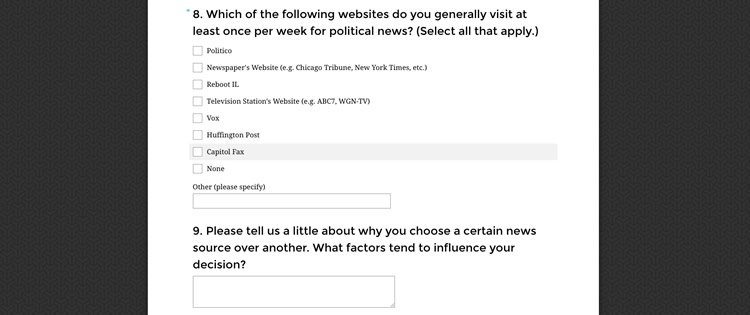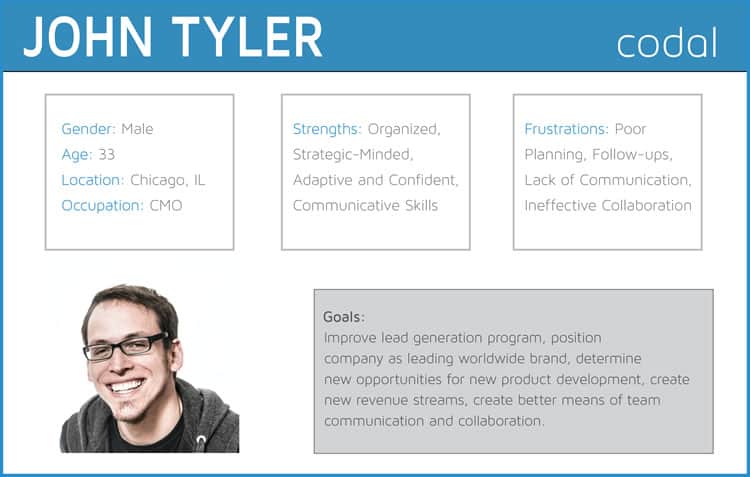
A user persona is a powerful UX research tool critical to the UX design process. It provides immeasurable value by giving the UX designer rich insight into the mind of the representative user.
Personas are, in essence, the manifestations of user research, and as such provide rich insight for every leg of the design process. Without research to back up design choices, the UX designer can often be reduced to taking chances in their work.
So What do Personas Really Do?
Personas are used to generalize the biographical data, frustrations, motivations, and goals of users that are representative of the platform for which you are designing.
They are also a critical part of goal-driven strategy, because they allow the user experience designer or researcher to focus on the specific needs and goals of the target user type.
Craft the Perfect Persona by Gathering Goal-Driven Data
Personas are only valuable if they truly represent the data you have collected about your users. UX designers may sometimes fall victim to the belief that their experience as a UXD has prepared them well enough to design without the need for user research.
This is a fundamentally flawed assumption – user research is among the most important pieces of the UX puzzle. As such, any research conducted prior to persona creation ought to be deeply analyzed in order for it to accurately represent target users.
Two of the best ways of generating goal-driven user data prior to persona creation are through the use of surveys and user interviews.
Surveys
Surveys are used to validate the assumptions that you make about your target. Prior to the creation and distribution of surveys, you ought to clearly define the goals of the survey if you want them to be maximally effective (i.e., which assumptions are you validating?).

Surveys can be distributed in a number of different ways, with each method possessing a unique advantage over the rest.
The Codal UX research team often distributes surveys through multiple channels, such as social media, as a link to an online survey, in an email update/newsletter, or on a website that pays users to respond.
For the most effective results, it is best to use a combination of all of these channels. There are plenty of benefits to diversifying survey distribution channels, namely the ability to target a specific group (such as one subscribed to a particular email list).
User Interviews
Surveys are extremely useful, but they often generate additional questions and assumptions that, in turn, must be validated. From experience I would advise that follow-up questions are conducted in the form of user interviews, in order to delve deeper into the research.
One of the hardest things about addressing any follow-up concerns is tracking down users that have already participated in the survey. Collecting contact information at the start of each survey is a great way to capture some potential interview subjects.
In order to maintain accuracy in your portrayal of the user type, it is critical to have balance in the sample users that you interview.
In terms of their knowledge of the platform or industry, demographics, experiences, and any other project-relevant data, interviewees ought to be widely dispersed across the representative curve, with added emphasis on the most presumptively frequent users.
Turn Research into Goal-Oriented Design with Personas
Once the surveys and interviews have been concluded, the UX Researcher must sort through the data and find what is usable, and what is not. This can often be the hardest step, as it can take a long time to determine what is useful.
This is where the UXDs’ insight and experience comes into play.

Once the data has been filtered for usability (and helpfulness), you ought to categorize and define the data, in order to create a more precise persona.
Namely, the data must be sorted in a way that the UX designer can glance at the persona and effectively determine the correct course of action at a given junction.
Conclusion: Create Usable Personas with UX Research
Personas are extremely useful. They are a powerful way to understand your users before your platform is built. As a designer, it is easier to justify design decisions when they are based off of research, not just design principles.
Keep in mind, however, that not all projects need to utilize user personas as they are typically used in more complex, research-driven projects.
If you already know who your users are and you have been dealing with the same users for a significant period of time, there will be less of a need for user research and user personas.
At Codal, the type of project determines the UX process that will be used, although we are heavy proponents of user research.
UXDs, remember: any assumptions that you make about your customers can be invalid, and the best way to find out is by performing usability testing. Pair a scenario with a persona after the design is implemented, and see if you have addressed it properly.
Want to learn more?
If you’d like to improve your skills in User Research, then consider taking the online course User Research – Methods and Best Practices. The course certificate is recognized by industry and it will help you advance your career. Alternatively, there is an entire course on Usability Testing which includes templates you can use in your own projects. Lastly, if you want to brush up on the basics of UX and Usability, you might take the online course on User Experience. Good luck on your learning journey!
(Lead image source: startupstockphotos – Creative Commons License)
